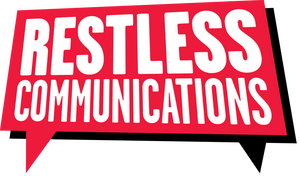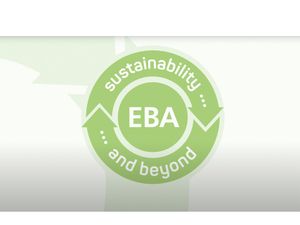Internal communications used to be so much easier.
Employees would come to an office.
Bosses would hold all-staff meetings or send all-staff emails.
Someone would put up posters in the staff restaurant.
And every organisation had an 'information cascade'.
But that was before this recent mix of new technology and new expectations.
New technology - like 'chat apps' and even social media channels.
And new expectations - like being able to work from home whenever people want. Or like Gen Y absolutely hating email with a vengeance because all they have ever been emailed is mailing list spam.
So what makes employee communications successful in a post-lockdown era?
What communication tools are best to help manage teams working at different times of the day? Or in different timezones?
And what is the best way to improve an organisation's culture? Particularly when many employees only come to an office a couple of times as week?
These are all questions we have been asked over the last year or so.
How to develop an effective internal communications strategy
In recent years we have increasingly been asked to apply our strategic communications expertise within organisations as much as outside. And at the same time we have seen a rapid rise of organisations trying to recruit for internal communications jobs.
And we always start with the same question:
What are you trying to achieve? And how will you measure success?
That's because every organisation has different requirements. And different examples of what they would describe as internal communications best practices.
The types of internal communications recommended should always be tailored to the organisation's specific needs.
Some organisations might need to ensure that they can cascade important information effectively from the boardroom to all staff.
While others might need to engineer an internal communication plan which ensures that information can travel 'horizontally'. So that knowledge is effectively shared between and across teams.
Other organisations still might have recognised that the employee experience they actually provide varies considerably from what they want. Or that they need to improve their company culture.
In every case, we work with our clients to benchmark their current situation. We look at where they want to be and we create a plan to get there.
One of the first places we start is looking at the company goals and asking how well staff recognise and buy into them.
A shared vision always improves employee motivation.
In our experience a good internal mission statement is the foundation of internal communication best practices.
Next, we look at their current internal communications tactics, including success stories and their recent internal communications examples, and we work out what could be improved. We define the purpose(s) for internal communications, before we start work on creating a new strategy.
Researching requirements
Once we are clear on what success looks like we develop a survey for our key stakeholders - including staff and managers.
We need to understand the current situation, to understand their appetite for change, and to find out what most people think should change.
Of course, managers and employees often want to see slightly different things. But often there is a general agreement on what should change to deliver more effective communication at all levels.
During this process we benchmark responses across different aspects of internal communications, including:
- Quality of communications by senior management
- Quality of communications with line management
- How 'listened to' do individuals feel
- How much employees recognise and relate to desired culture
- How much independence do employees feel have to do their job e.g. via remote working
- How effective are the current channels, platforms, routes and tools used for internal communications
The outputs of this research help us to define the tasks ahead, but also give us hard data which we can use to track changes at the end of the project.
Writing an internal communications plan
Now we know what success looks like, and where we are starting from. So we can start to create our internal communication strategy and set our approach to employee communications.
Our internal comms strategy will feature a blend of SMART objectives, key audiences, and tools. As well as success metrics.
SMART objectives are:
- Strategic
- Measurable
- Achievable
- Realistic
- Time-limited
The more specific we are when we define these objectives, the more likely our activity will succeed. We are big fans of hard targets and clear KPIs.
Not everyone in the organisation feels or acts the same way, so we need to segment our internal communications audience, just as we would do if working on strategic communications project.
Within our audience we will try and identify 'amplifiers' - people who are either already influential in their organisation because of their seniority, or because of their personality. We will look out for 'detractors' and critics too, and plan a strategy to accommodate both.
Deciding on the best internal communications tools for the job
When it comes to internal comms tools, we will review the main communications platforms that our client uses. At this point we may well recommend other tools for specific tasks.
From project management tools for the internal communications manager, through to a dedicated employee engagement app for the HR team.
Although most organisations now use some 'chat' technology like Microsoft Teams or Slack many individuals find that the software they use prevents them from having any clear blocks of time to do their job effectively.
So sometimes our recommendations include using new tools less, not more.
Email tends to be the tool we recommend the least.
There are a number of much more effective tools to boost internal employee communication, particularly to communicate management decisions or to improve employee engagement.
And email is also not suited at all to improve internal communication 'across' an organisation.
Who should own internal communications?
There is no single right answer to this question. So there is no right answer to the question 'who should own the internal communications strategy?"
In many organisations, the person with the internal communications job description reports to HR.
In others it's the Director of Comms who is responsible for delivering strong internal communication.
In practice though, the best internal comms teams combine the strengths and expertise of both disciplines. And they reflect the desired culture of the organisation as a whole.






